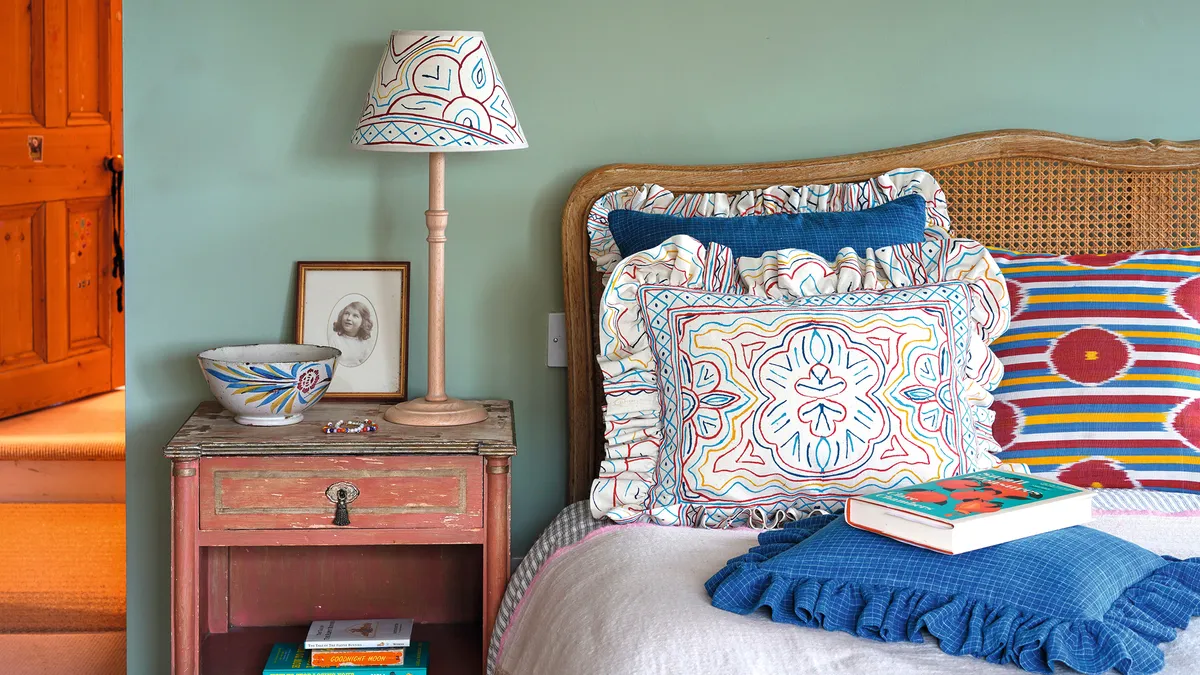After a year of seeking solace in our homes, harmony, comfort and a renewed interest in pattern take centre stage when designing or updating your bedroom!Transform your bedroom into calm, characterful and clutter-freehaven with our brilliant bedroom design ideas and perfectly planned colour schemes.
Choose your perfect bed
By day, it is the visual focus of the room; by night, it transforms into a cosy place to rest, so when you’re choosing a bed, take time to ensure that it fulfils its dual role without compromise. Comfort is so subjective that the only way to find your ideal bed is by trial and error. Visit a well-stocked showroom, taking your partner with you, then lie on a selection of beds for a few minutes at a time. Experiment with mattresses and bases of different kinds and in varying combinations until you identify which feels right for you.
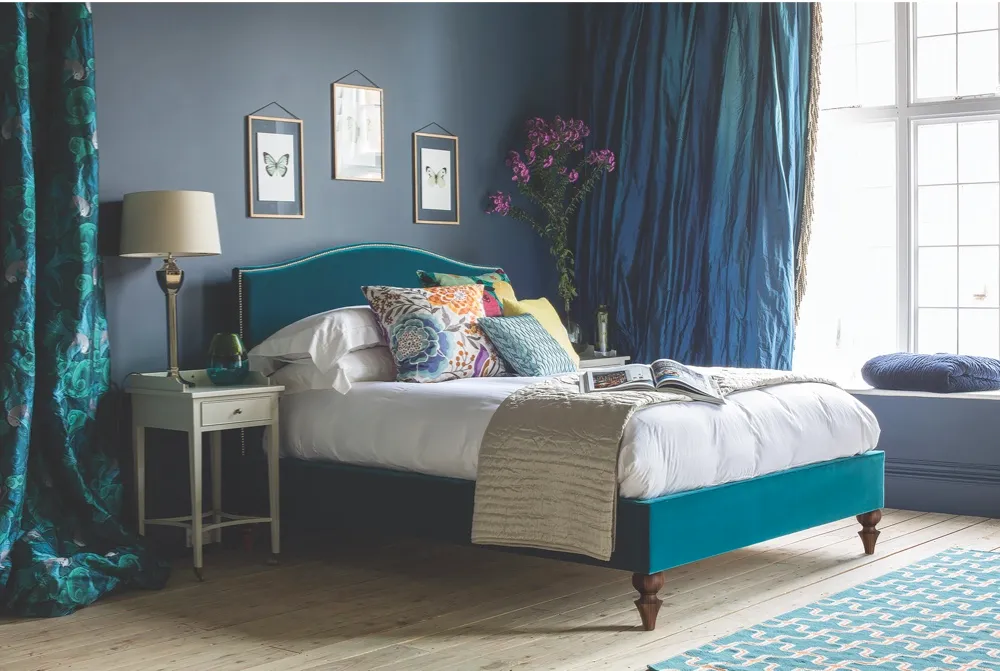
Another decision when choosing a bed is whether to go for a bedstead or a divan base. Most new bedsteads are fitted with sprung slats to provide a resilient base for the mattress. The slats should be no more than 10cm apart to prevent damage to the mattress.
Divan bases consist of an upholstered box construction with a firm or sprung surface to support the mattress. ‘There are some very smart boutique hotel-worthy bedsteads around, while divans with ottoman storage or drawers are handy if you’re short of space,’ says Loaf founder Charlie Marshall.
Consider adding a headboard
Oversized headboards provide a decorative focusas well as a comfortable backrest, and are enjoyinga revival in bedroom design.
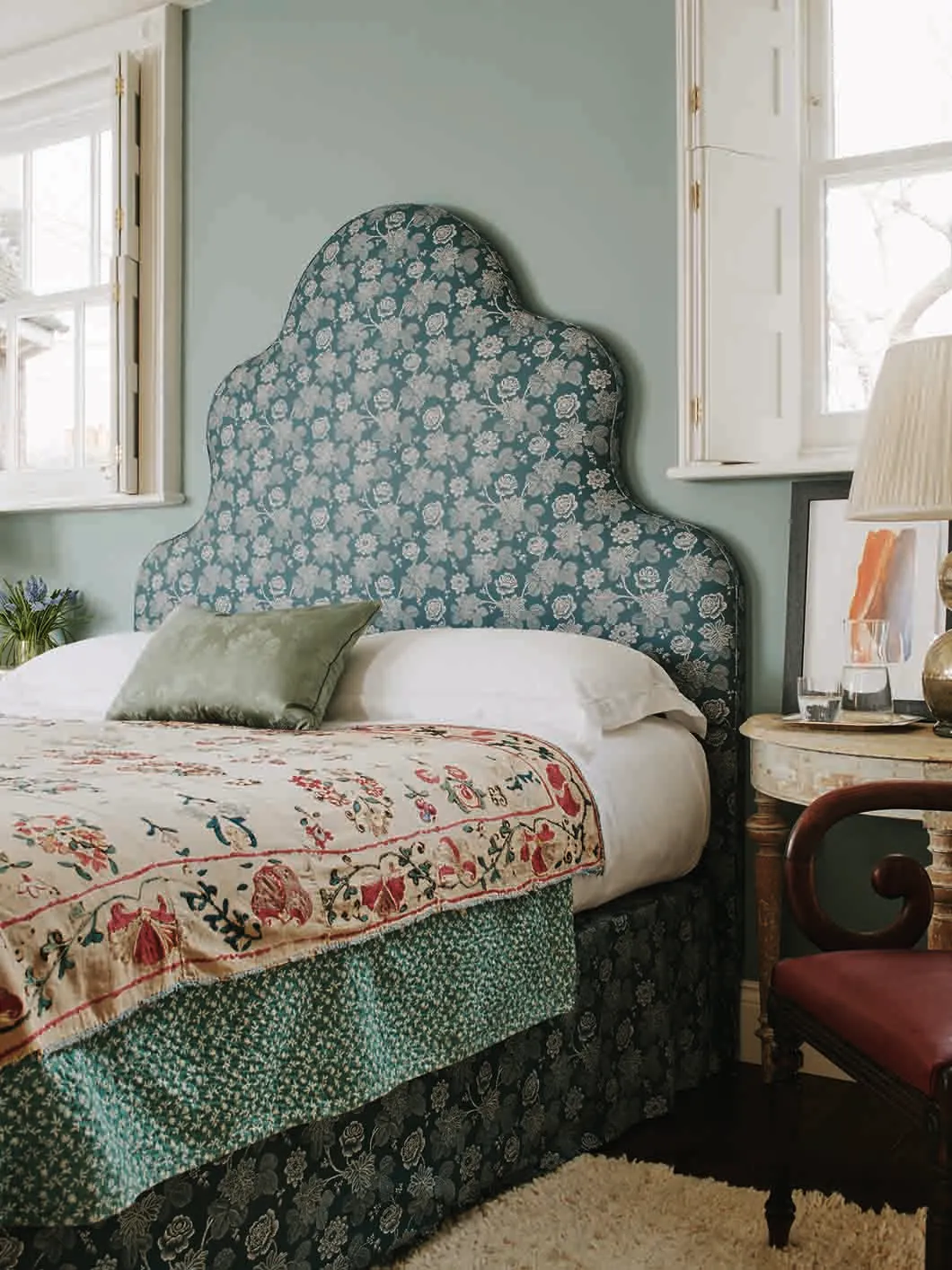
Upholstered headboards come in a wider range of designs than ever before, from boutique hotel-style tall, padded panels to traditional curved shapes and winged designs. Specialist suppliers offer a range of the most popular shapes, but if you have something more individual in mind, seek out upholsterers offering a bespoke service.
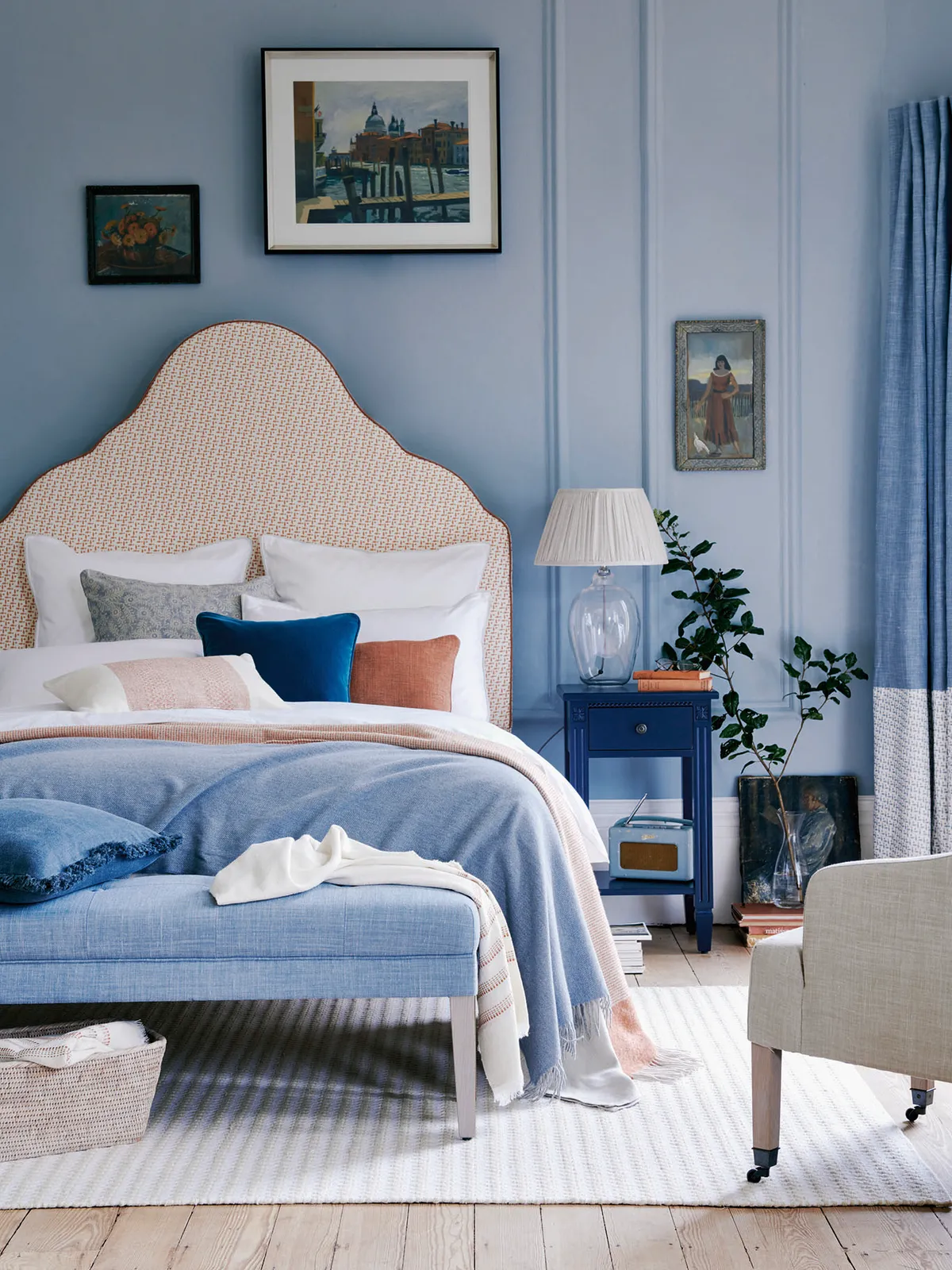
Try mattresses before you buy
A good mattress is vital for sound sleep so it’s important to try before you buy. The heavier you are, the firmer the mattress you’ll need but if you and your partner differ widely in weight, consider zip-link mattresses, which allow each person to have a level of firmness that suits them.
Mattresses may be filled with synthetic foam or natural materials and most also contain springs. ‘Springs are for support and fillings are for comfort. Different fillings have a very different feel,’ says Jim Gerety, Vispring sales director.
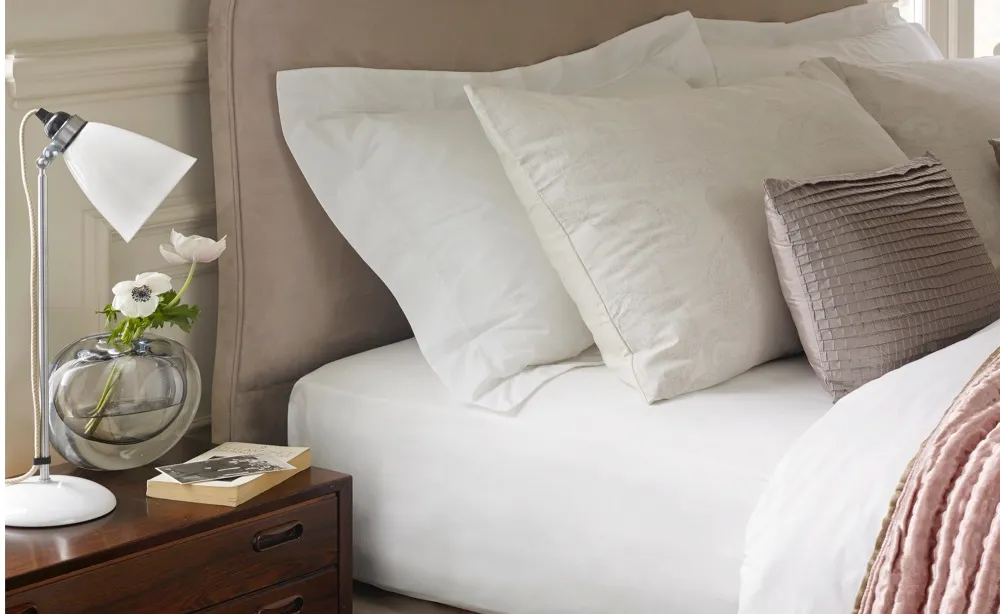
Choose the right bed linen for you
Bed linen adds colour to your bedroom, but it’s the way it feels next to your skin that is most important. Choose from a variety of fibres – polycotton is durable and practical, dries quickly and is easy to iron. Cotton comes in various weaves; Egyptian cotton is one of the finest. If you want a a crisp matte finish, opt for cotton percale, or for a silkier feel, go for sateen.
There’s a trend towards more luxurious, boutique hotel-style bed linen, and fine cotton with a high thread count is considered as desirable as silk or pure linen. The thread count of a fabric denotes the number of threads to the square inch counting horizontally and vertically – the higher the number, the greater the perception of luxury.
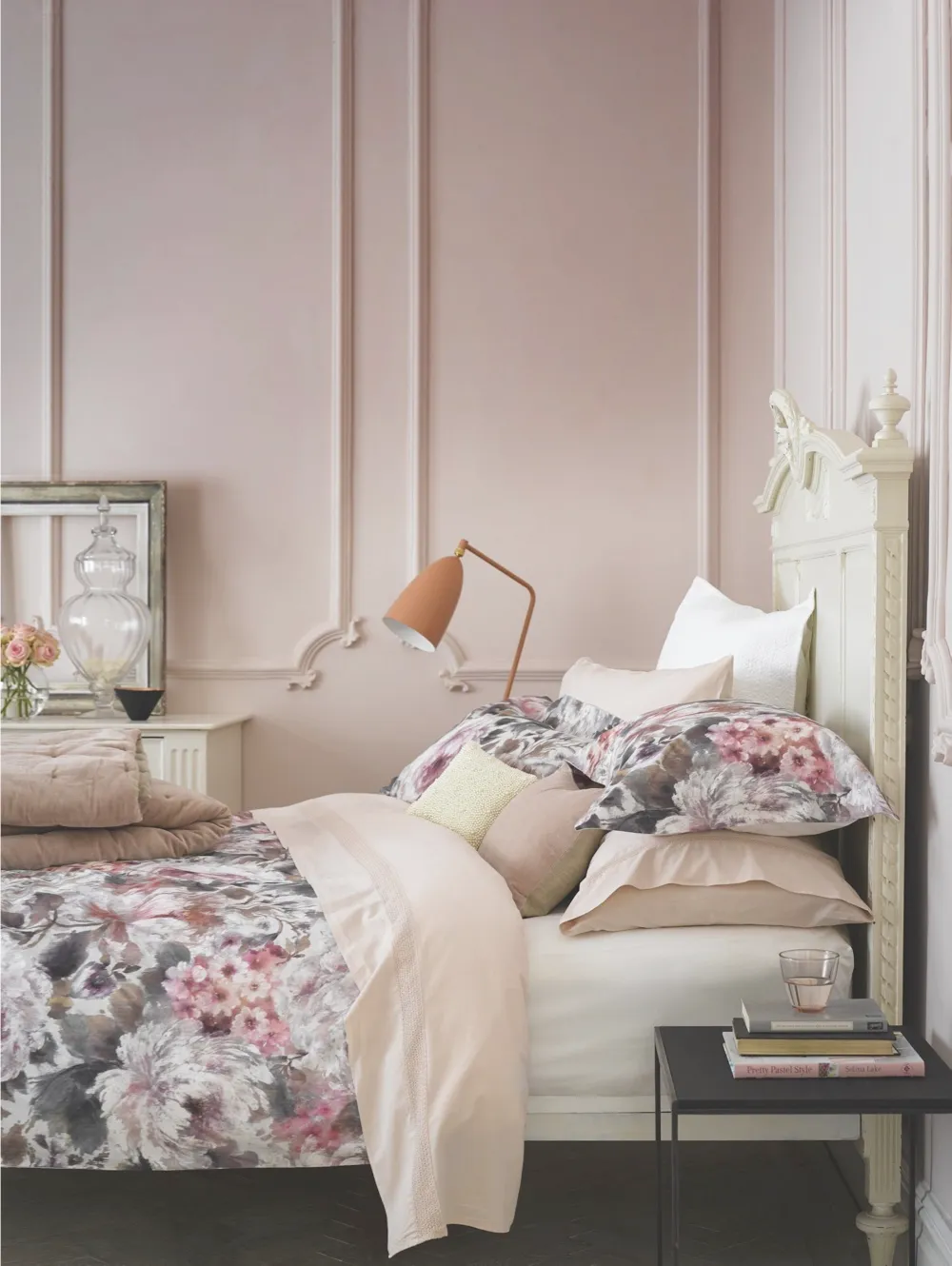
However, that is not the whole story. ‘A high thread count alone doesn’t necessarily mean greater quality,’ says Pauline Woods, product technologist for John Lewis. ‘The benefits of a high-quality bed linen are to do with finish and feel, so the number of threads should be balanced by the way the fabric is woven. Percale cotton is tightly woven to give a crisp finish, while sateen weave fabric is softer to the touch.’
Choose the right duvet for each season
The warmth of duvets is measured in togs: the higher the rating, the warmer it will be. Choose 4.5 to 7 togs for summer and 10.5 to 13.5 togs for winter. Four-seasons duvets combine a low and a medium rated quilt to give three options. Natural duvet fillings usually contain feather, down or a mix of the two.
‘The most luxurious duvets contain a high percentage of down, which has no quill and traps air effectively,’ says Sarah Wadsworth of The Fine Bedding Company. ‘Duvets with a higher feather content are heavier and perfect if you like a 'tucked in' feeling.’ Synthetic duvets are washable, so are ideal for allergy sufferers.
A comfortable, supportive pillow is another sleep essential. The softest synthetic pillows contain microfibre fillings, while memory foam gives gentle support and latex a more resilient pillow. Down is the softest natural filling but, for a firmer feel, choose feather.
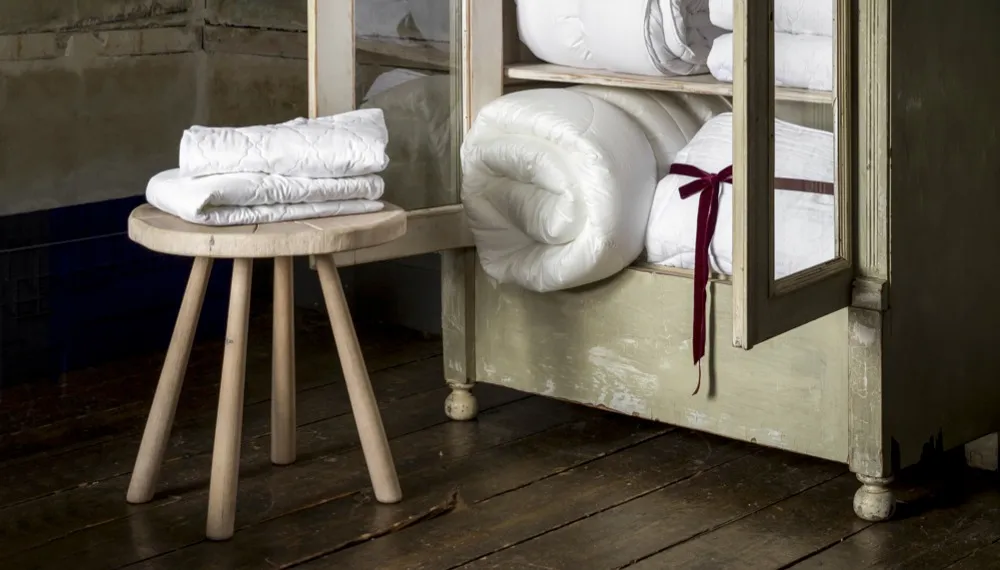
Consider your bedroom storage needs
Uncluttered rooms, furnished with a few beautiful and essential pieces, exude an air of order and elegance. To achieve this, seek out discrete storage ideas that put unused areas to work. Built wall to wall with no gaps, fitted furniture uses every inch of space for storage, and ingenious interior arrangements ensure the contents are kept tidy. Divan bases offer high-capacity storage for out of season clothes and spare bedding. Choose drawers to organise smaller items, or an ottoman bed with a lift-up mattress if you need a larger space.
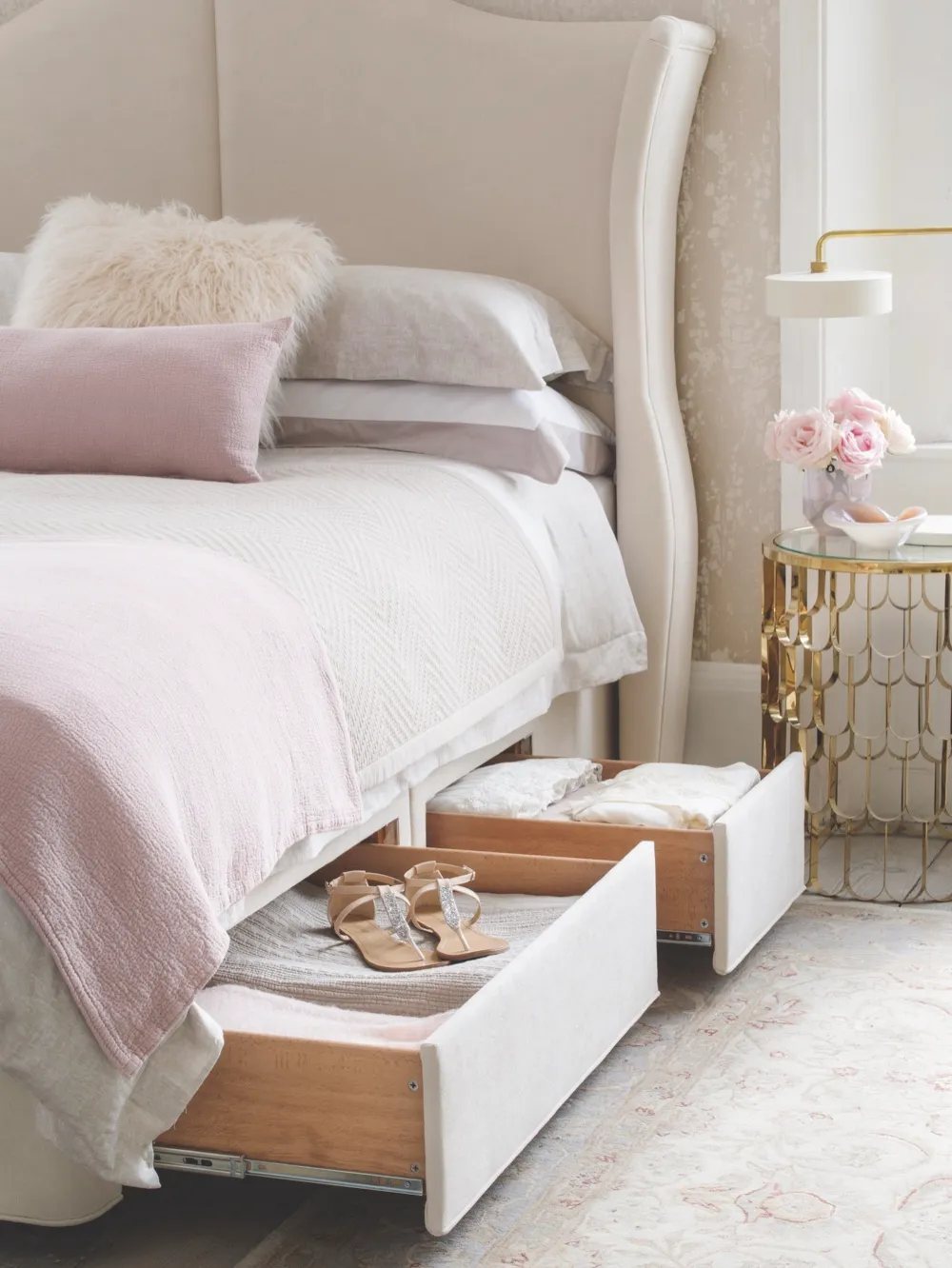
The wardrobes you choose will depend on the style of your bedroom, the space available and the amount of storage you need. Free-standing furniture is a good option if you lack wall space that’s uninterrupted by doors and windows, or if you expect to move house and plan to take your furniture with you.
Fitted furniture is best for high-capacity storage and can be tailored to fit virtually any space. ‘A full-height wardrobe will have room for a double hanging rail,’ says Karen Kendick of John Lewis of Hungerford. ‘Spacing the rails one metre apart allows skirts, trousers and shirts to hang in two tiers.
Decorate to create a calm and characterful space
Essentially a private space, the bedroom is a room where you can indulge your personal taste. Choose colour to create the right mood; if you’re a morning person, you may want an uplifting scheme that looks bright and sunlit when you wake, but if you take time to wind down in the evening, softer, warmer tones will have a cosseting effect.
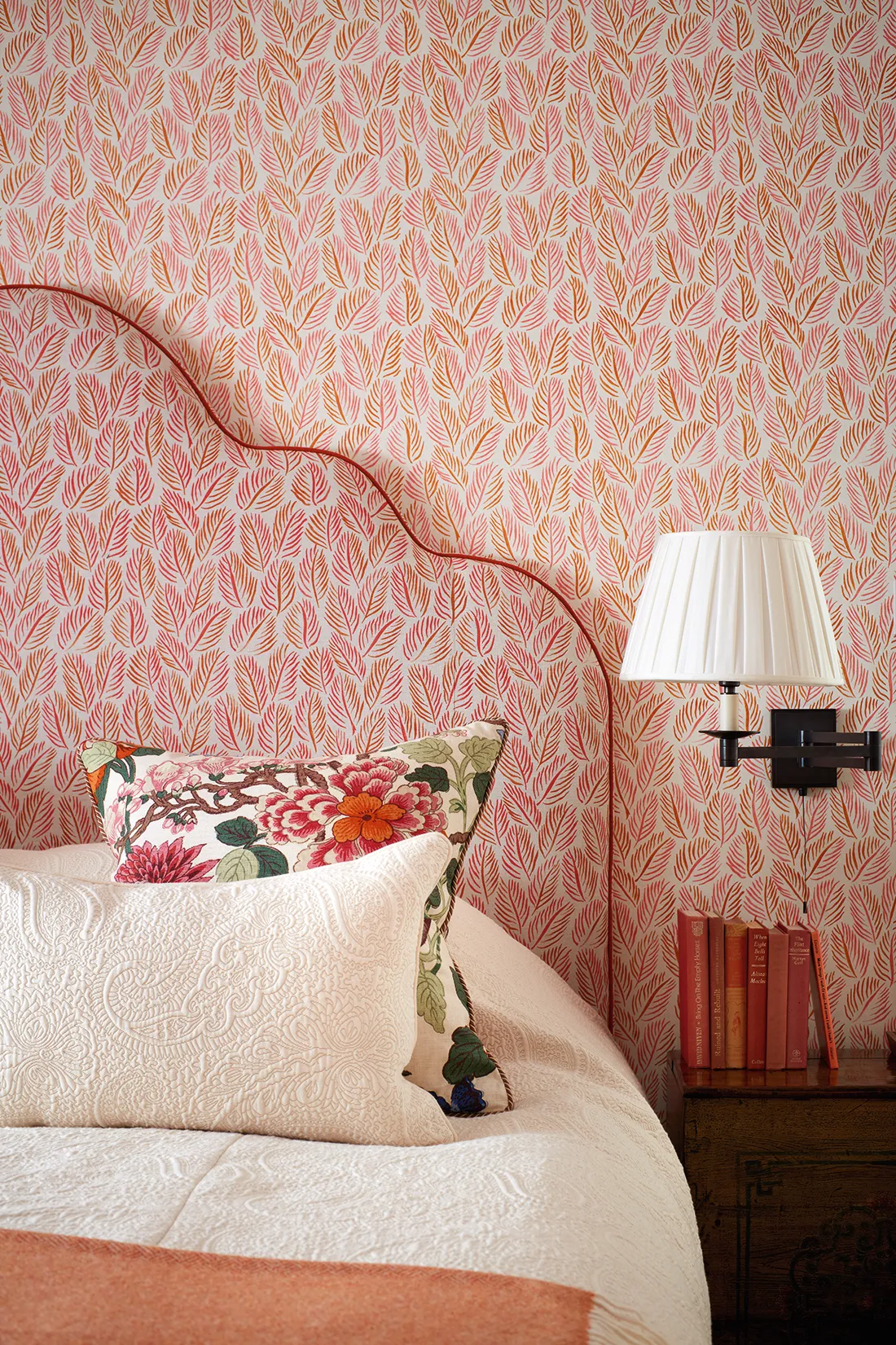
If the bed and wardrobe are essential items of furniture for any bedroom, it is the smaller pieces that make the room comfortable and convenient to use. A chest of drawers can be a decorative addition as well as a means of expanding clothes storage, while bedside cabinets can provide a hiding place for books and other essentials.
Pictures on the walls or a group of framed photographs give the room a personal touch. ‘A few finishing touches such as an upholstered headboard, a little armchair or a comfy stool at the end of the bed can make the room seem like a luxury hotel every night,’ says John Sims Hilditch, founder of Neptune Home.
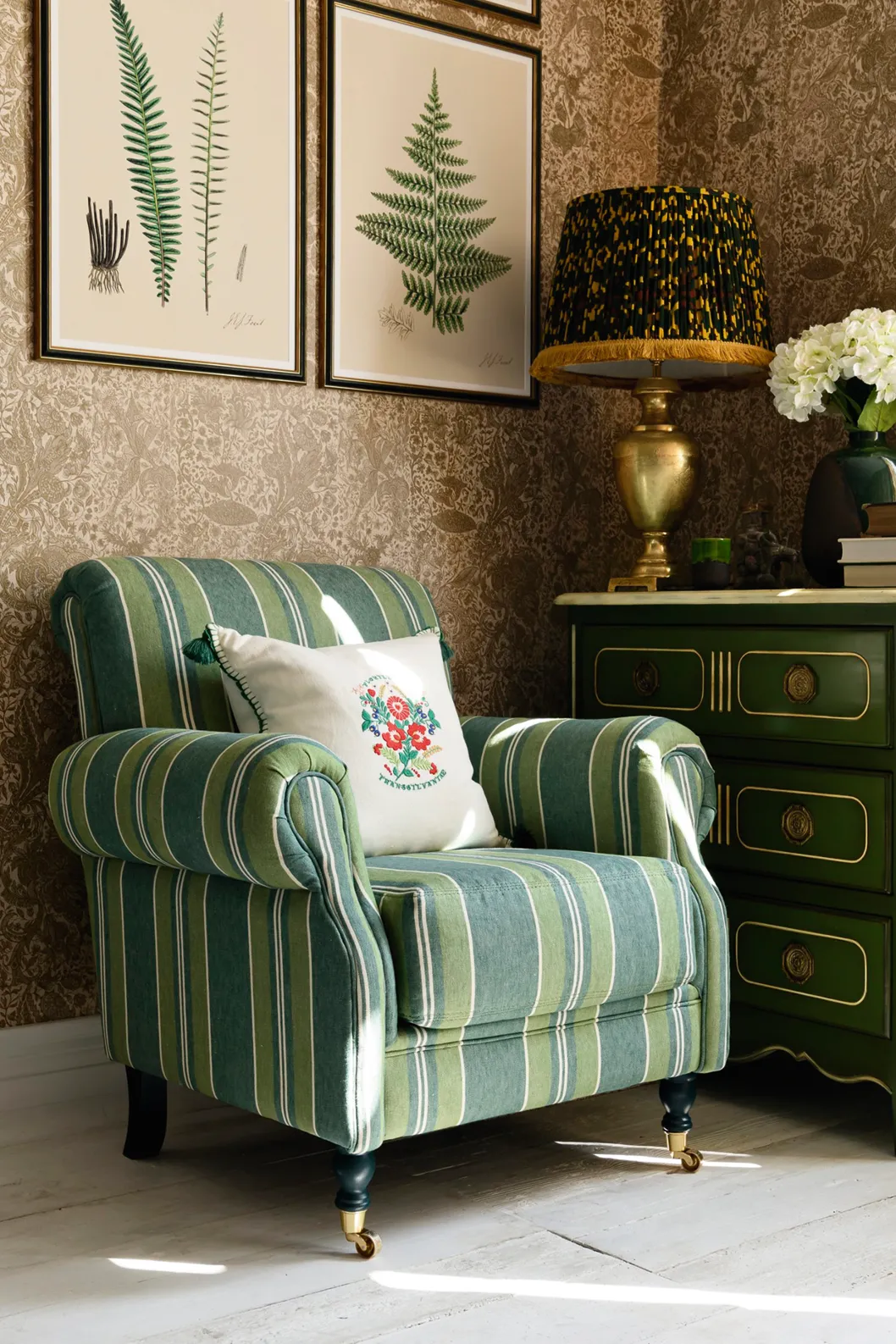
Consider your bedroom flooring
Stepping out of bed on to a warm, soft surface will create a sense of luxury, so choose bedroom floor coverings that feel good to the touch. If you have wood flooring, use rugs where you’re most likely to walk barefoot. For a simple, handcrafted look, woven cotton runners are an affordable choice but, for tactile extravagance, choose natural sheepskins or thick pile Greek flokati rugs.
In a spacious bedroom, placing a very large rug underneath the bed, so it extends at the sides and foot, defines the sleeping area and gives a generous, expansive feel. ‘As the bedroom is a low traffic area, a luxurious look is more important than durability, so opt for an economical wool blend carpet or the sumptuous appearance of a long pile saxony carpet,’ says Jeremy Garrish, carpet buying director at Carpetright.
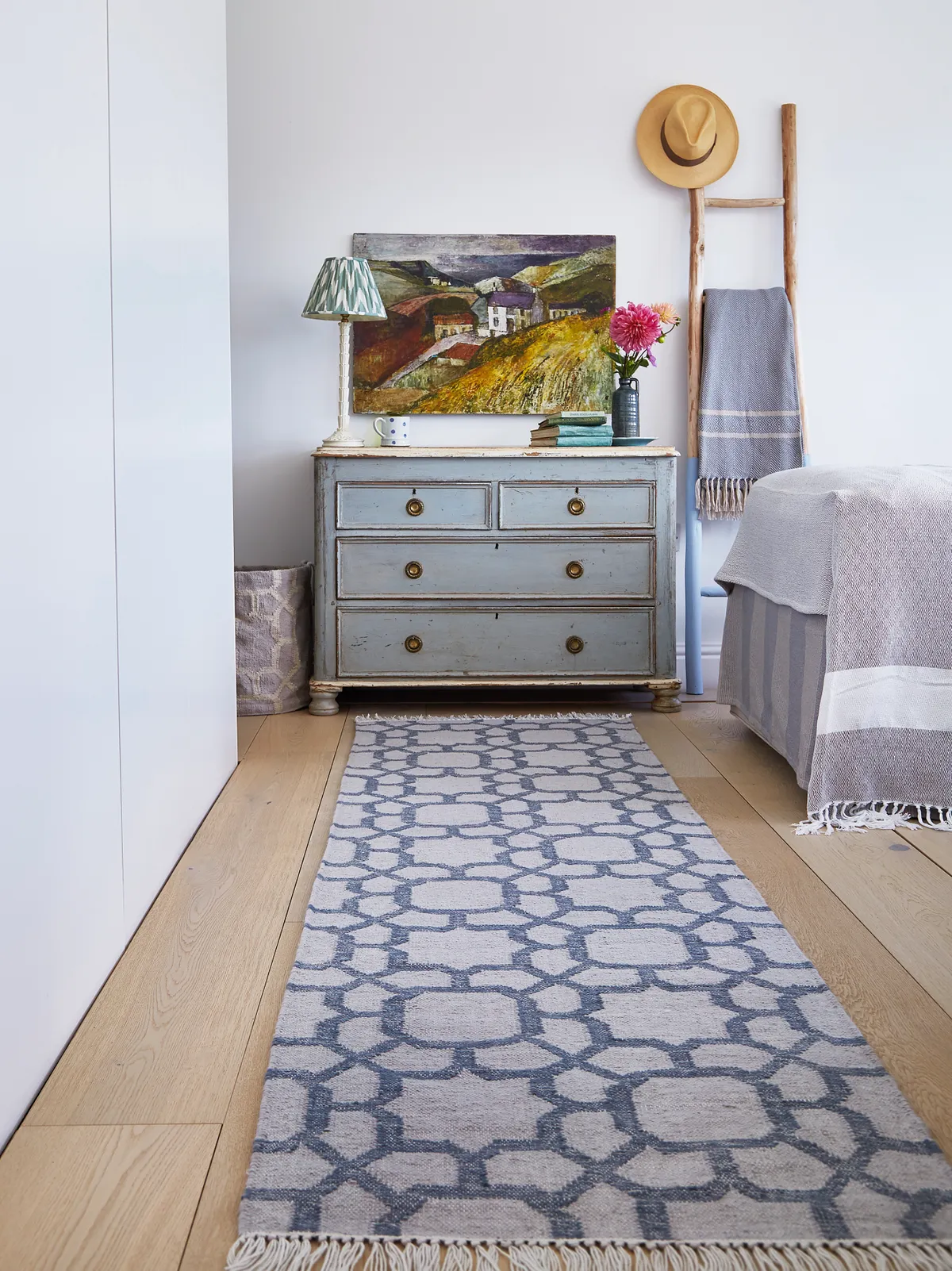
Soft flooring comes into its own in the bedroom and, along with the living room, is often the place where people choose to have fitted carpets. If you prefer floorboards, ensure you still gain comfort underfoot by investing either in a large rug that will fill most of the room or in a number of smaller rugs. These can be of differing styles and designs as longas they work together tonally.
Add soft furnishings
Curtains, cushions and throws add a touch of comfort and style to bedrooms so once you've decided your colour scheme and theme, choose curtains that complement your design and help keep in heat. A couple of scatter cushions, plus a cosy throw can add the finishing touches to any room.
